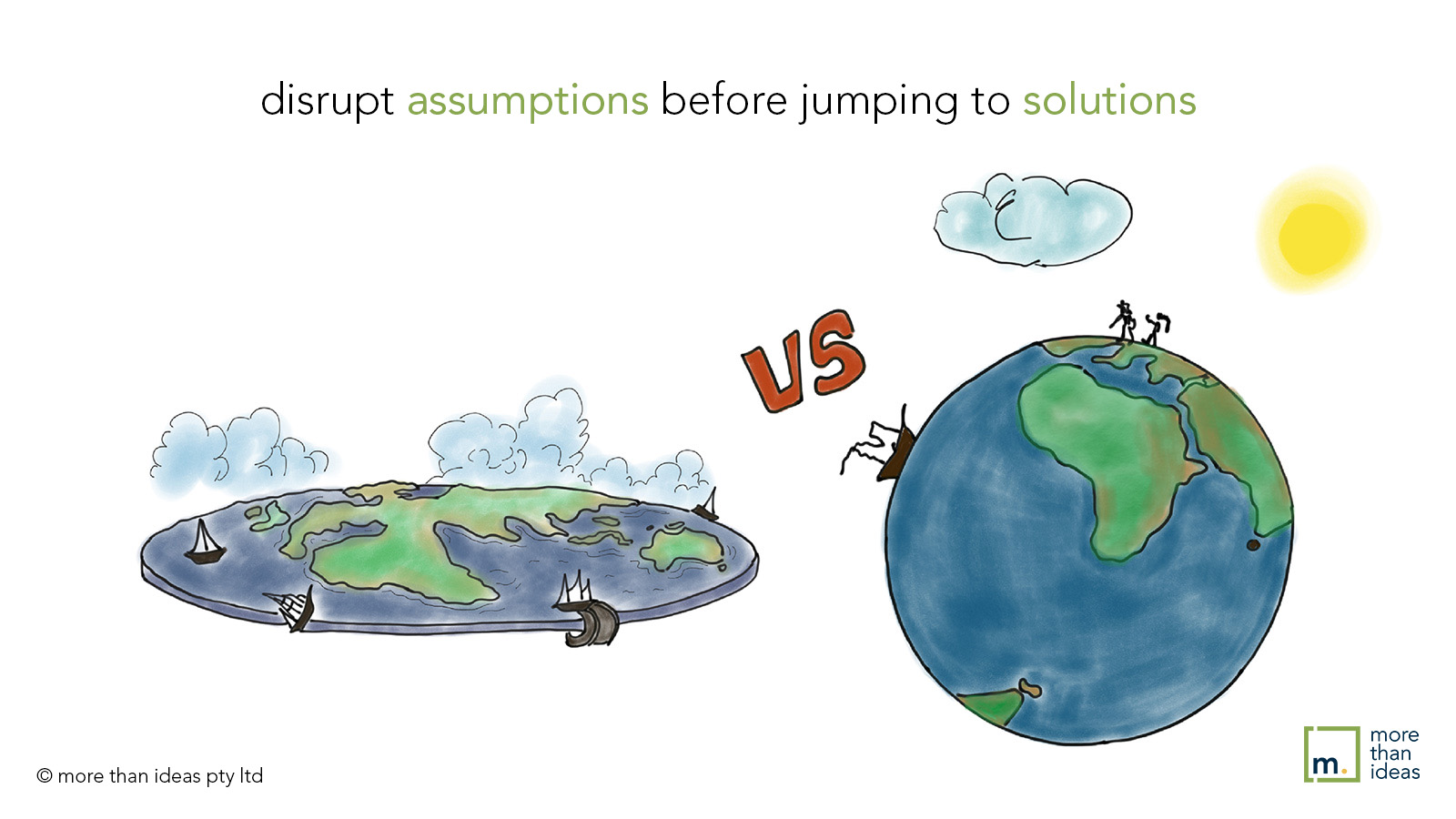You’ll often hear design thinkers talk about the importance of identifying biases, assumptions and blindspots. The problem is if we unconsciously define these into the problem definition we hobble ourselves before we get started.
A great technique to do this is assumption dumping. Get a group of people in the room that are likely to be part of the solution (issue owners, clients, impacted parties, funders, decision makers).
Put up the problem or challenge as you see it. Ask people to hold a five minute small group discussion about the problem – no more instruction, only rule is to discussion the challenge. After five minutes ask everyone to silently, as an individual, write down everything they think is an essential fact or feature about the challenge. It can be either something they believe to be true or something they have heard regularly that others believe to be true.
Usually 3-5 minutes is enough. Once finished gather everyone together to look at the list of ‘essential facts’. Get the groups to pick out one fact that they think is uncontentious and one that is contentious and explore the validity of the statement. As the tables report back a number of assumptions will be revealed, to be debunked in the room. At the same time the set of key ‘facts’ or agreed operating parameters will also emerge meaning the ‘solutions’ team can set off to do their work on a solid basis and with a better frame of reference.
Typically this process of assumption dumping will reveal things about the past, present and future that effect how we see the problem, and thus the likely solutions we will entertain. You’ll hear things like ‘we only have so much money to address this” or “we tried to solve this last year by doing xyz and that failed so we shouldn’t look at that again”.
Other common assumptions are about the nature of the problem (it’s a capability problem, it’s an IT problem etc) or the reason we are addressing it.
Just think, if you have a team operating under the assumption that you are recrafting an existing service to bring down costs when it is really about capturing a new market segment and some R&D funding the options they consider will be very different. Hard to think beyond the horizon when you believe the earth is flat.
